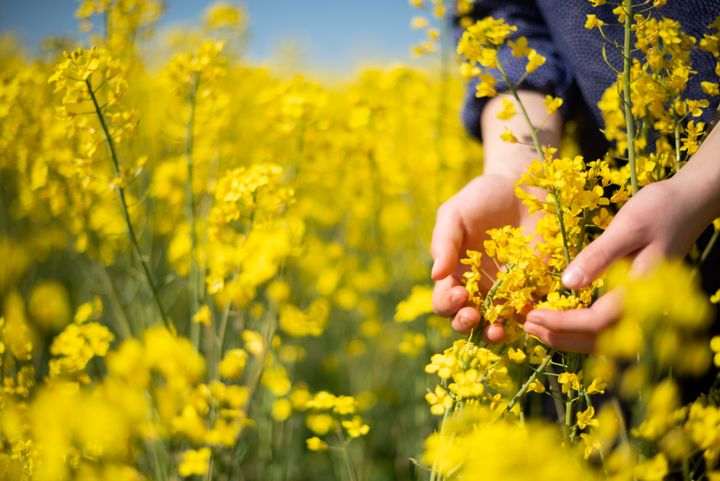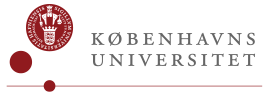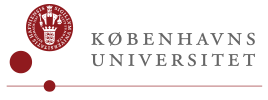Researchers close to unleashing rapeseed’s protein power for human consumption

Yellow flower carpeted fields are a sure sign of summer. In Denmark, more than 200,000 hectares of rapeseed are now cultivated for use as edible and industrial oils, and as a protein supplement for animal feed – but not as a direct food source for humans. While the rapeseed plant’s high content of bitter defensive substances keep disease and herbivores at bay, they also make the plant inedible for humans.
Now, a team of scientific researchers from the University of Copenhagen’s Department of Plant and Environmental Sciences has identified the proteins that help store the bitter substances in seeds of thale cress, a model plant and close relative of rapeseed. The new research result has just been published in the renowned scientific journal Nature
The knowledge can be used to remove these proteins and in doing so, rapreseed’s bitter taste, which offers a wealth of opportunity. Indeed, half of the EU's locally-grown plant proteins already come from rapeseed plants.
"The climate crisis demands that we reduce meat consumption and eat more plants, which is where rapeseed has great potential as a new source of plant protein in the green transition. Our latest research results bring us a critical step closer to making full use of rapeseed," says Professor Barbara Ann Halkier, who led the research.
Substances in wasabi and mustard are gone
Rapeseed’s bitter defensive substances are called glucosinolates and are best known as the spicy flavors in wasabi and mustard. As a result, the so-called rapeseed cake, which is the remains of the seeds after the oil has been squeezed out, has only been used in limited quantities as feed for pigs and chickens, despite its staggering 30-40 percent protein content.
The researchers succeeded in removing the bitter defensive substances by identifying the three proteins in the plant responsible for transporting the substances into its seeds. The new knowledge makes it possible to prevent the accumulation of these substances in the seed by removing the proteins by way of a technology called 'transport engineering'. As such, the defensive substances remain in all other parts of the plant, allowing it to continue to defend itself.
"Our research demonstrates that the connection – a kind of umbilical cord – that exists between the seeds and surrounding fruit shell, is a cell factory for the production of glucosinolates which end up in the seeds. After all, plants are well rooted in soil and cannot just walk away when there is danger. They need to produce a multitude of defensive substances to protect themselves from attacks by disease and herbivores. Our discovery has allowed us to find a way to eliminate these bitter substances from the seeds," says Dr. Deyang Xu, lead author of the new study.
A breakthrough ten years in the making
So far, the researchers have shown that their method works in thale cress (Arabidobsis thaliana), a model plant closely related to the rapeseed plant.
"The next task is to show that we can transfer our result from Arabidopsis to the closely related rapeseed plant, which we are now working on," says Dr. Xu.
The research that led to this discovery is the result of a long haul made possible by a 10-year grant from the Danish National Research Foundation to the DynaMo Centre at the Faculty of Science’s Department of Plant and Environmental Sciences.
"I cannot stress enough how important this long-term grant has been for us to be able to land this major research result. It has really given us time to immerse ourselves in the details and geek out, which has paid off," says Barbara Ann Halkier.
Facts about plant defenses:
Plants of the cruciferous family are characterized by being able to produce a group of defense substances called glucosinolates. These substances give plants such as broccoli, cabbage, arugula and rapeseed a strong and bitter taste that scares off herbivores and diseases.
To protect their offspring, thale cress and closely related rapeseed plants fill their seeds with glucosinolates so that the seeds and small seedlings can defend themselves against insects and other enemies. As the seeds cannot synthesize glucosinolates themselves, the substances must be transported from the mother plant to the seeds.
Some glucosinolates are healthy, such as those in broccoli and other cabbages. However, glucosinolates in the seeds of the rapeseed plant are unhealthy.
Contact:
Barbara Ann Halkier
Professor
Department of Plant and Environmental Sciences
University of Copenhagen
Mobile/phone:
Email bah@plen.ku.dk
Michael Skov Jensen
Journalist and team coordinator
The Faculty of Science
University of Copenhagen
Mobile: +45 93 56 58 97
msj@science.ku.dk
Contacts
Barbara Ann Halkier
Professor
Department of Plant and Environmental Sciences
University of Copenhagen
Mobile:+45 40 18 22 60
Email bah@plen.ku.dk
Michael Skov Jensen
Journalist and team coordinator
The Faculty of Science
University of Copenhagen
Mobile: +45 93 56 58 97
msj@science.ku.dk
Images

About Københavns Universitet - Det Natur- og Biovidenskabelige Fakultet
 Københavns Universitet - Det Natur- og Biovidenskabelige Fakultet
Københavns Universitet - Det Natur- og Biovidenskabelige FakultetBülowsvej 17
1870 Frederiksberg C
35 33 28 28https://science.ku.dk/
Det Natur- og Biovidenskabelige Fakultet på Københavns Universitet – SCIENCE – er landets største naturvidenskabelige forsknings- og uddannelsesinstitution.
Fakultetets væsentligste opgave er at bidrage til løsning af de store udfordringer, som vi står overfor i en verden under hastig forandring med øget pres på bl.a. naturressourcer og markante klimaforandringer - både nationalt og globalt.
Subscribe to releases from Københavns Universitet - Det Natur- og Biovidenskabelige Fakultet
Subscribe to all the latest releases from Københavns Universitet - Det Natur- og Biovidenskabelige Fakultet by registering your e-mail address below. You can unsubscribe at any time.
Latest releases from Københavns Universitet - Det Natur- og Biovidenskabelige Fakultet
Saving the Asian Unicorn – If It Still Exists6.5.2025 09:48:24 CEST | Press release
The saola, an antelope-like bovine, is one of the world’s rarest and most endangered mammals. In fact, it hasn’t been observed in over 10 years. Researchers from the University of Copenhagen, in collaboration with Vietnamese scientists and an international team of researchers, have for the first time mapped the saola’s complete genome, and they have used that knowledge to estimate the chances of saving it – if it still exists.
Sådan redder vi den asiatiske enhjørning – hvis den altså findes6.5.2025 07:07:00 CEST | Pressemeddelelse
Den antilopeagtige okse, saolaen, er et af verdens mest sjældne og mest truede pattedyr – faktisk er den ikke blevet set i over 10 år. Forskere fra Københavns Universitet har i samarbejde med vietnamesiske forskere som de første kortlagt saolaens gener, og den viden har de brugt til at beregne sandsynligheden for, at vi kan nå at redde den – hvis den altså stadig findes.
Saving the Asian Unicorn – If It Still Exists5.5.2025 17:00:00 CEST | Press release
The saola, an antelope-like bovine, is one of the world’s rarest and most endangered mammals. In fact, it hasn’t been observed in over 10 years. Researchers from the University of Copenhagen, in collaboration with Vietnamese scientists and an international team of researchers, have for the first time mapped the saola’s complete genome, and they have used that knowledge to estimate the chances of saving it – if it still exists.
Bakterier bruger gammelt krigstrick til at overliste vira: Kan hjælpe med at bekæmpe ’superbugs’30.4.2025 07:30:00 CEST | Pressemeddelelse
Forskere har opdaget en ny type immunforsvar i coli-bakterier, der vender en virusinfektion mod vira selv. Systemet er opkaldt efter den kinesiske militærstrateg Kongming som var berømt for at bruge fjendens våben til at besejre dem. Opdagelsen kan bruges i udviklingen af fremtidige bioteknologiske værktøjer og måske som et alternativ til antibiotika til at bekæmpe multiresistente bakterier.
Nyt forskeruddannelsesprogram skal udklække fremtidens kvantespecialister29.4.2025 10:24:11 CEST | Pressemeddelelse
Med støtte fra Villum Fonden opretter Københavns Universitet og DTU et nyt forskeruddannelsesprogram, der skal være med til at sikre, at Danmark kan bevare sin styrkeposition inden for kvanteforskning i fremtiden.
In our pressroom you can read all our latest releases, find our press contacts, images, documents and other relevant information about us.
Visit our pressroom